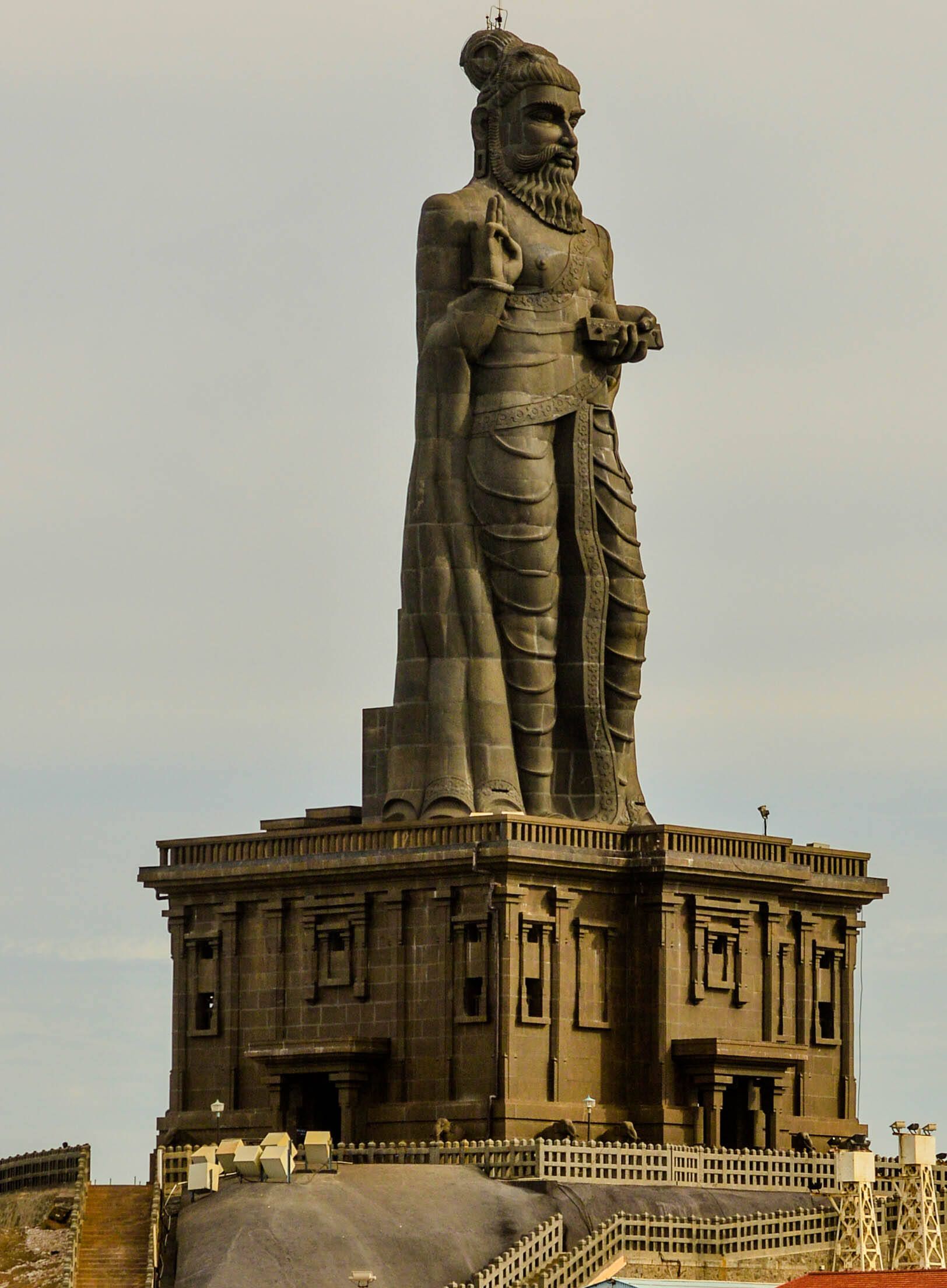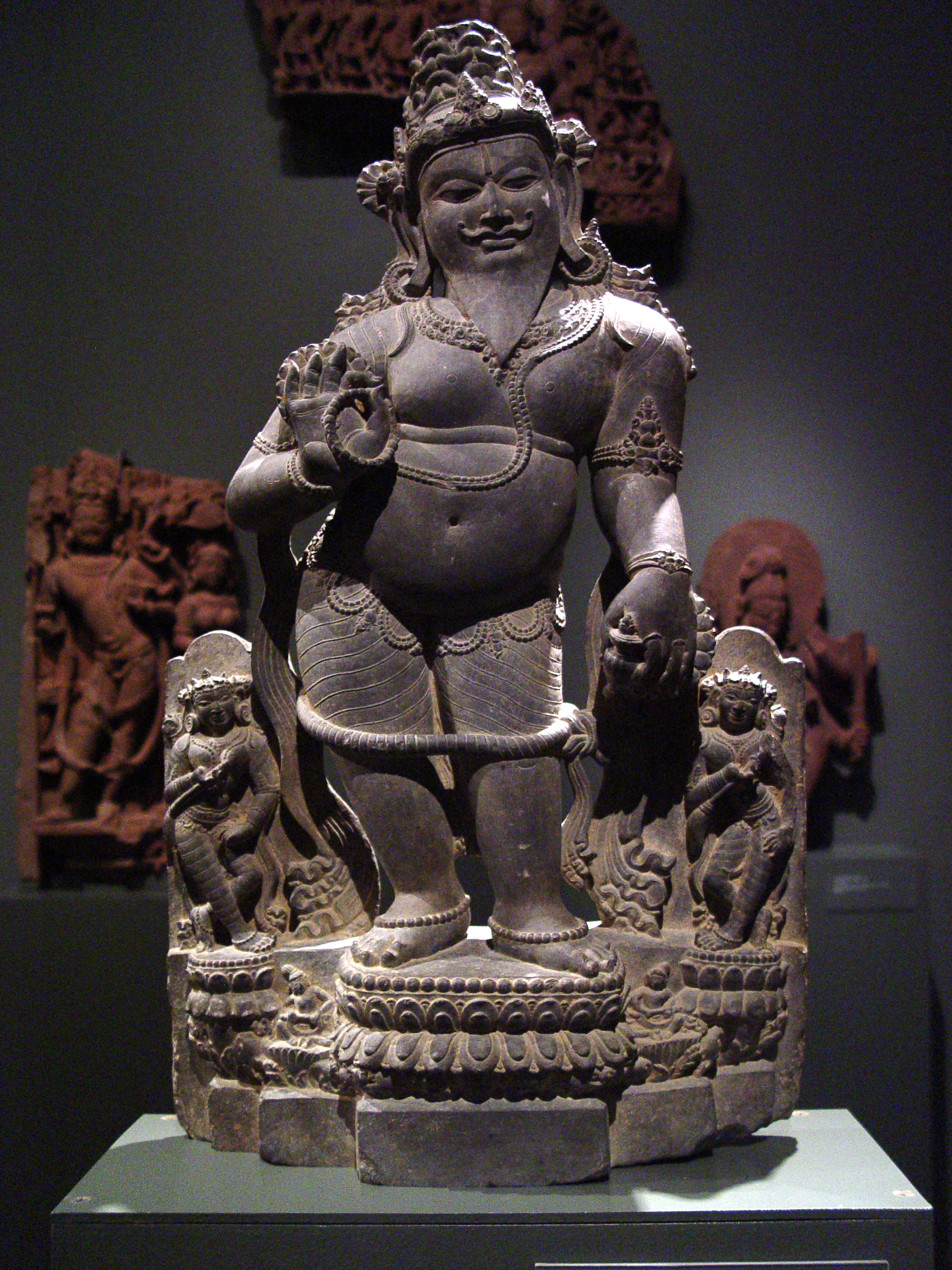|
Patiṉeṇkīḻkaṇakku
The Eighteen Lesser Texts, known as the Patiṉeṇkīḻkaṇakku ( ta, பதினெண்கீழ்கணக்கு) in the literature, is a collection of eighteen poetic works mostly created during the 'post Sangam period' (between 100 and 500 CE). The poems of this collection differ from the earlier works of the Eighteen Greater Texts (''Patiṉeṇmēlkaṇakku''), which are the oldest surviving Tamil poetry, in that the poems are written in the venpa meter and are relatively short in length. Naladiyar, having sung by 400 poets, is the only anthology in this collection. Each of the remaining works of the Eighteen Lesser Texts is sung by a single poet. Unlike the works of the Eighteen Greater Texts, most of the books of the Eighteen Lesser Texts deal with morals and ethics. Works of the "Eighteen lesser books" collection The Eighteen Lesser Texts contains the following books: * ''Nālaṭiyār'' * ''Nāṉmaṇikkaṭikai'' * ''Iṉṉā Nāṟpatu'' * '' Iṉiyava ... [...More Info...] [...Related Items...] OR: [Wikipedia] [Google] [Baidu] |
Nālaṭiyār
The Nālaṭiyār ( ta, நாலடியார்) is a Tamil poetic work of didactic nature belonging to the Eighteen Lesser Texts (''Patiṉeṇkīḻkaṇakku'') anthology of Tamil literature. This belongs to the post Sangam period corresponding to between 100 and 500 CE. ''Nālaṭiyār'' contains 400 poems, each containing four lines. Every poem deals with morals and ethics, extolling righteous behaviour. Etymology The term ''Naladiyar'' is derived from the Tamil terms ''Naalu'', a colloquial form of ''Naangu'' meaning “four”, ''adi'' meaning metrical feet or poetic metre, and ''aar'' referring to a honorific suffix. Thus ''Naladiyar'' refers to the work that contains four-lined verse. The work is also termed ''Naaladi Naanooru'', sometimes spelled ''Naladi Nannurru'', meaning "four hundred quatrains," since it has 400 verses in total. Didactic nature ''Nālaṭiyār'' was composed by Jain monks. It is an anthology in the venba metre and is pessimistic in its outl ... [...More Info...] [...Related Items...] OR: [Wikipedia] [Google] [Baidu] |
Tirukkuṛaḷ
The ''Tirukkuṟaḷ'' ( ta, திருக்குறள், lit=sacred verses), or shortly the ''Kural'' ( ta, குறள்), is a classic Tamil language text consisting of 1,330 short couplets, or kurals, of seven words each. The text is divided into three books with aphoristic teachings on virtue (''aram''), wealth (''porul'') and love (''inbam''), respectively. Considered one of the greatest works ever written on ethics and morality, it is known for its universality and secular nature. Its authorship is traditionally attributed to Valluvar, also known in full as Thiruvalluvar. The text has been dated variously from 300 BCE to 5th century CE. The traditional accounts describe it as the last work of the third Sangam, but linguistic analysis suggests a later date of 450 to 500 CE and that it was composed after the Sangam period. The Kural text is among the earliest systems of Indian epistemology and metaphysics. The Kural is traditionally praised with epithets and alte ... [...More Info...] [...Related Items...] OR: [Wikipedia] [Google] [Baidu] |
Nāṉmaṇikkaṭikai
Nāṉmaṇikkaṭikai ( ta, நான்மணிக்கடிகை) is a Tamil poetic work of didactic nature belonging to the Eighteen Lesser Texts (''Patiṉeṇkīḻkaṇakku'') anthology of Tamil literature. This belongs to the 'post Sangam period corresponding to between 100 and 500 CE. ''Nanmanikkatigai'' contains one hundred songs written by the poet Vilambi Naganaar. This poetic work is famous for its clarity and easy readability and is often a prescribed text for schools in Tamil Nadu. The poems of ''Nanmanikkatigai'' are written in the Venpa meter. The poems of ''Nāṉmaṇikkaṭikai'' each contain four different ideas. The name ''Nāṉmaṇikkaṭikai'' denotes this fact comparing the four ideas to four well-chosen gems adorning each poem. The following poem describes four different groups of people who cannot sleep well at night, namely, a thief, a lovelorn person, someone who hankers after money and a person who wishes to guard his wealth: கள்வம� ... [...More Info...] [...Related Items...] OR: [Wikipedia] [Google] [Baidu] |
Aintiṇai Aimpatu
Ainthinai Aimpathu (Tamil: ஐந்திணை ஐம்பது) is a Tamil poetic work belonging to the Eighteen Lesser Texts (''Patiṉeṇkīḻkaṇakku'') anthology of Tamil literature. This belongs to the 'post Sangam period' corresponding to between 100 – 500 CE. ''Ainthinai Aimpathu'' contains fifty poems written by the poet Kannankoothanaar, who lived in Madurai. The poems of, ''Ainthinai Aimpathu'', deal with the ''agam'' (internal) subjects. ''Agam'' in the Sangam literature denotes the subject matters that deal with the intangibles of life such as human emotions, love, separation, lovers' quarrels, etc. The poems of ''Ainthinai Aimpathu'' are categories into ten poems for each of the five ''thinai'', or landscape of Sangam poetry and describe in detail the situation and emotions specific to each landscape. The five landscapes of Sangam poetry are ''mullai'' – forest, ''kurinji'' – mountains, ''marutham'' – farmland, ''paalai'' – arid land and ''neithal ... [...More Info...] [...Related Items...] OR: [Wikipedia] [Google] [Baidu] |
Aintinai Eḻupatu
Aintinai Eḻupatu ( ta, ஐந்திணை எழுபது), is a Tamil poetic work belonging to the Eighteen Lesser Texts (''Patiṉeṇkīḻkaṇakku'') anthology of Tamil literature, belonging to the post-Sangam period corresponding to between 100–500 CE. ''Aintinai Eḻupatu'' contains seventy poems written by the poet Muvathiyaar. The poems of ''Aintinai Eḻupatu'' deals with the subjective (''agam'') concepts. ''Agam'' in the Sangam literature denotes the subject matters that deal with the intangibles of life such as human emotions, love, separation, lovers' quarrels, etc. The poems of ''Aintinai Eḻupatu'' are categorised into fourteen poems for each of the five ''thinai'', or landscape of Sangam poetry and describe in detail the situation and emotions specific to each landscape. The five landscapes of Sangam poetry are ''mullai'' – forest, ''kurinji'' – mountains, ''marutham'' – farmland, ''paalai'' – arid land and ''neithal'' – seashore. Reference ... [...More Info...] [...Related Items...] OR: [Wikipedia] [Google] [Baidu] |
Sangam Period
The Sangam period or age (, ), particularly referring to the third Sangam period, is the period of the history of ancient Tamil Nadu, Kerala and parts of Sri Lanka (then known as Tamilakam) spanning from c. 6th century BCE to c. 3rd century CE. It was named after the famous Sangam academies of poets and scholars centered in the city of Madurai. The First Sangam to be located in ''Then Madurai'' under the patronage of 89 Pandya kings, during this period. It is said to have lasted for 4,440 years, and this would put the First Sangam between 9600 BCE to 5200 BCE. In Old Tamil language, the term Tamilakam (''Tamiḻakam'', ''Purananuru'' 168. 18) referred to the whole of the ancient Tamil-speaking area, corresponding roughly to the area known as southern India today, consisting of the territories of the present-day Indian states of Tamil Nadu, Kerala, parts of Andhra Pradesh, parts of Karnataka and northern Sri Lanka also known as Eelam. History According to Tamil legends, th ... [...More Info...] [...Related Items...] OR: [Wikipedia] [Google] [Baidu] |
Sangam Literature
The Sangam literature (Tamil: சங்க இலக்கியம், ''caṅka ilakkiyam'';) historically known as 'the poetry of the noble ones' (Tamil: சான்றோர் செய்யுள், ''Cāṉṟōr ceyyuḷ'') connotes the ancient Tamil literature and is the earliest known literature of South India. The Tamil tradition and legends link it to three literary gatherings around Madurai and Kapāṭapuram ( Pandyan capitals): the first over 4,440 years, the second over 3,700 years, and the third over 1,850 years before the start of the common era. Scholars consider this Tamil tradition-based chronology as ahistorical and mythical. Most scholars suggest the historical Sangam literature era spanned from c. 300 BCE to 300 CE, while others variously place this early classical Tamil literature period a bit later and more narrowly but all before 300 CE. According to Kamil Zvelebil – a Tamil literature and history scholar, the most acceptable range for the Sangam l ... [...More Info...] [...Related Items...] OR: [Wikipedia] [Google] [Baidu] |
Kainnilai
Kainnilai (Tamil:கைந்நிலை), and Innilai (Tamil:இன்னிலை) are Tamil poetic works belonging to the Eighteen Lesser Texts (''Pathinenkilkanakku'') anthology of Tamil literature. These two books together form the eighteenth book in the anthology, belonging to the 'post Sangam period' corresponding to between 100 and 500 CE. ''Kainnilai'' contains sixty poems written by the poet Pullangkaathanaar(புல்லங்காட) and ''Innilai'' contains 45 poems and was written by the poet Poigayaar(பொய்கையார). The poems of ''Innilai'' deal with the ethical concepts of ''aram'' – propriety, ''porul'' – wealth, ''inpam'' – love and ''veedu'' – salvation. In this respect it is similar to ''Tirukkural'' which also concerns with these concepts. ''Kainnilai'' is available in a much-damaged condition with many of its poems only partially available. ''Kainnilai'' deals with the subjective (''agam'') concepts. ''Agam'' in the Sangam li ... [...More Info...] [...Related Items...] OR: [Wikipedia] [Google] [Baidu] |
Elāti
Elathi is a Tamil poetic work of didactic nature belonging to the Eighteen Lesser Texts (''Pathinenkilkanakku'') anthology of Tamil literature. This belongs to the 'post Sangam period' corresponding to between 100 and 500 CE. ''Elathi'' contains 80 poems written by the poet Kani Methaviyar. The poems of ''Elathi'' are written in the Venpa meter. ''Elathi'' uses the analogy of the traditional herbal medicine known as ''elathi'' which uses six herbs such as ''elam'' (cardamom), ''ilavanka pattai'' (cinnamon), ''naagakesaram'' (made from the stamens of the Ceylon ironwood), ''milagu'' (black pepper), ''thippili'' (long pepper), and ''sukku'' (dried ginger Ginger (''Zingiber officinale'') is a flowering plant whose rhizome, ginger root or ginger, is widely used as a spice A spice is a seed, fruit, root, bark, or other plant substance primarily used for flavoring or coloring food. Spices ...). ''Elathi'' similarly uses six different maxims to illustrate correct behavio ... [...More Info...] [...Related Items...] OR: [Wikipedia] [Google] [Baidu] |
Mutumoḻikkānci
Muthumozhikkanchi (Tamil: முதுமொழிக்காஞ்சி) is a Tamil poetic work of didactic nature belonging to the Eighteen Lesser Texts (''Pathinenkilkanakku'') anthology of Tamil literature. This belongs to the 'post Sangam period' corresponding to between 100 and 500 CE. ''Muthumozhikkanchi'' contains 100 poems written by the poet Mathuraikkoodalaar Kilaar who must have lived in Madurai. The poems of ''Muthumozhikkanchi'' are divided into ten groups of ten poems each and employs simple poetic style to enable the lay person to understand the messages. All the poems start with the same phrase - ஆர்கலி உலகத்து மக்கட் கெல்லாம் ("For all the people of this world") as a preface and the rest of the first line qualifies the characteristic dealt by the rest of the ten lines of the section. In the following poem, the excellence (சிறந்தன்று) of righteous behaviour and chastity are found in t ... [...More Info...] [...Related Items...] OR: [Wikipedia] [Google] [Baidu] |
Ciṟupañcamūlam
Ciṟupañcamūlam (Siruppanchamulam) (Tamil: சிறுபஞ்சமூலம்) is a Tamil poetic work of didactic nature belonging to the Eighteen Lesser Texts (''Pathinenkilkanakku'') anthology of Tamil literature. This belongs to the 'post Sangam period' corresponding to between 100 – 500 CE. ''Siruppanchamulam'' contains 100 poems written by the poet Kariyaasaan. He was probably a Jain by religious persuasion. This and the fact that he was a student of one Makkayanaar is known from the introductory poem of this book. The poems of ''Siruppanchamulam'' are written in the Venpa meter. Siruppanchamulam uses the analogy of the traditional herbal medicine, which uses the roots of the five herbs ''kandankatthiri'' (a plant of the nightshade family – ''Solanum xanthocarpum''), ''siruvzhuthunai'', ''sirumalli'', ''perumalli'', and ''nerunji'' (a thorny prostrate plant – ''Tribulus terrestris'') to cure certain maladies. ''Siruppanchamulam'' similarly uses five differen ... [...More Info...] [...Related Items...] OR: [Wikipedia] [Google] [Baidu] |
Paḻamoḻi Nāṉūṟu
Pazhamozhi Nanuru (Tamil: பழமொழி நானூறு) is a Tamil poetic work of didactic nature belonging to the Eighteen Lesser Texts (''Pathinenkilkanakku'') anthology of Tamil literature. This belongs to the 'post Sangam period' corresponding to between 100 and 500 CE. ''Pazhamozhi Nanuru'' contains 400 poems written by the poet Munrurai Araiyanaar, a Jain. The poems of ''Pazhamozhi Nanuru'' are written in the Venpa meter. ''Pazhamozhi Nanuru'' employs old Tamil proverbs to illustrate its messages. The following poem uses the adage that it is impossible to straighten the tail of a dog, as it impossible to control the unchaste mind of a girl by throwing her in prison. நிறையான் மிகுகலா நேரிழை யாரைச் சிறையான் அகப்படுத்தல் ஆகா - அறையோ வருந்த வலிதினின் யாப்பினும் நாய்வால் திருந்து ... [...More Info...] [...Related Items...] OR: [Wikipedia] [Google] [Baidu] |


